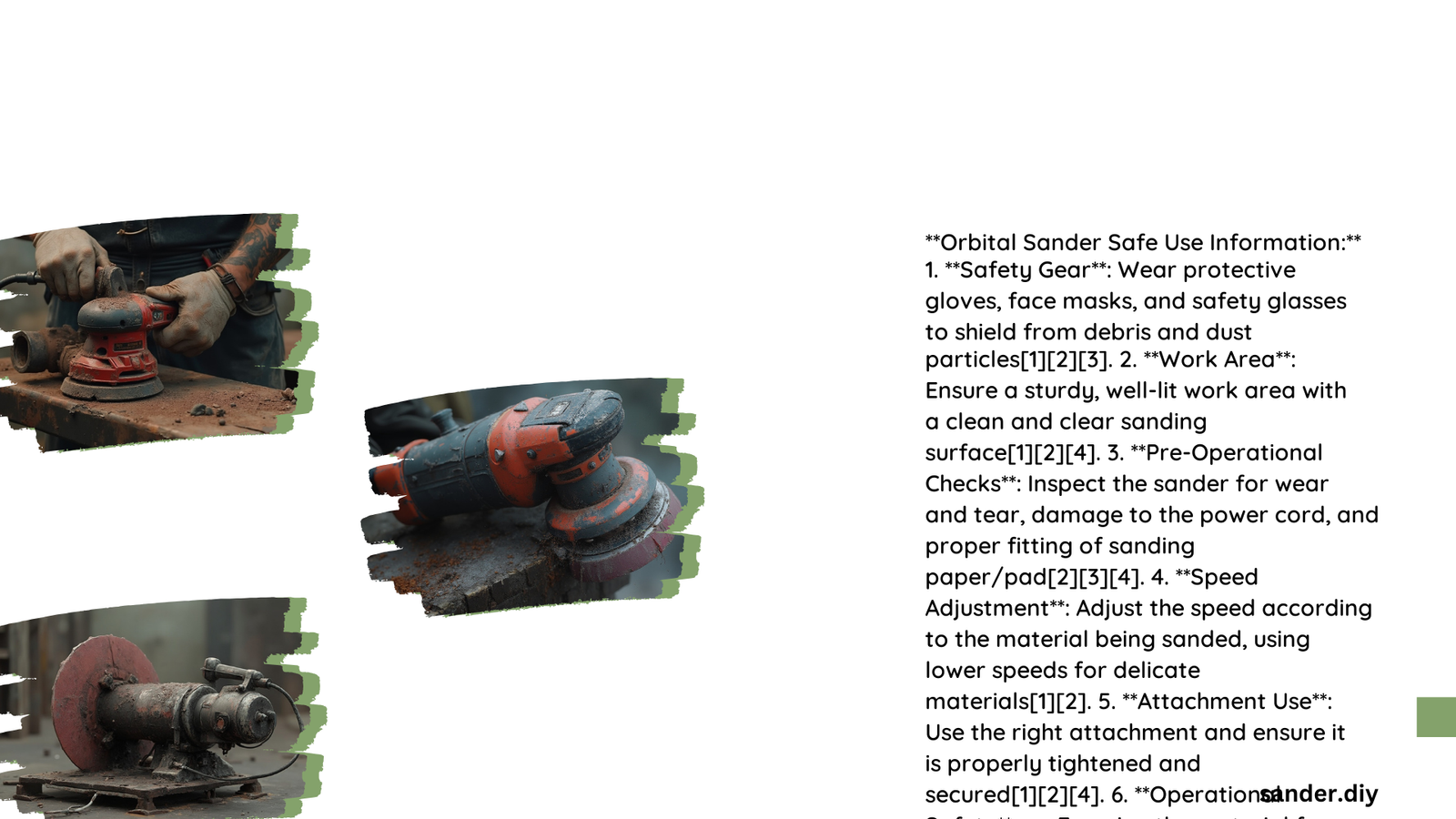Orbital sanders are powerful woodworking tools that require meticulous safety precautions to prevent injuries, equipment damage, and potential workplace hazards. Understanding comprehensive orbital sander safe use information is crucial for professionals and DIY enthusiasts to ensure optimal performance, personal protection, and long-term tool reliability. This guide provides a detailed exploration of essential safety protocols, operational techniques, and protective strategies for responsible orbital sander usage.
What Are the Primary Safety Risks with Orbital Sanders?
Orbital sanders present multiple potential safety risks, including:
- Dust Inhalation: Fine wood particles can cause respiratory issues
- Electrical Hazards: Damaged cords or improper connections
- Physical Injuries: Potential hand and finger trauma
- Material Kickback: Unexpected tool movement during operation
How Can Users Prepare the Work Environment?

Workspace Preparation Checklist
| Preparation Step | Details | Importance |
|---|---|---|
| Clear Area | Remove clutter and unnecessary objects | High |
| Stable Surface | Use solid, level workbench | Critical |
| Lighting | Ensure bright, clear illumination | Medium |
| Ventilation | Open windows or use extraction systems | High |
What Personal Protective Equipment Is Essential?
Comprehensive personal protection involves multiple layers of safety gear:
- Eye Protection
- ANSI Z87.1 certified safety glasses
-
Full-face shields for additional protection
-
Respiratory Defense
- N95 respirator masks
-
Professional-grade dust extraction systems
-
Hearing Protection
- Noise-reduction earmuffs
- Rated minimum 25 dB sound attenuation
How Should an Orbital Sander Be Operated Safely?
Operational Best Practices
- Grip Technique: Always use two-handed control
- Pressure Management: Apply gentle, consistent pressure (5-10 lbs)
- Movement Pattern: Use smooth, overlapping motions
- Speed Control: Maintain steady, controlled speed
What Maintenance Procedures Enhance Safety?
Pre-Use Inspection Protocols
- Examine power cord for damage
- Check sanding pad for wear
- Verify dust collection system functionality
- Ensure all safety guards are intact
What Are Common Mistakes to Avoid?
Critical errors that compromise orbital sander safety include:
- Ignoring manufacturer’s instructions
- Skipping personal protective equipment
- Using damaged or worn tools
- Sanding near flammable materials
- Applying excessive pressure
Technical Recommendations for Safe Operation
- Always disconnect power before changing accessories
- Store sanders in dry, secure locations
- Replace worn components immediately
- Clean tools after each use
- Conduct regular professional inspections
Recommended Dust Management Strategies
- Use sanders with integrated dust collection
- Wear appropriate respiratory protection
- Clean work area thoroughly after sanding
- Dispose of dust safely in sealed containers
Emergency Response Preparedness
- Keep first aid kit nearby
- Know basic wound treatment procedures
- Have fire extinguisher accessible
- Understand electrical safety disconnection
Conclusion
Mastering orbital sander safe use information requires continuous learning, vigilant practice, and commitment to comprehensive safety protocols. By implementing these guidelines, woodworkers can significantly reduce workplace risks and enhance overall operational efficiency.
